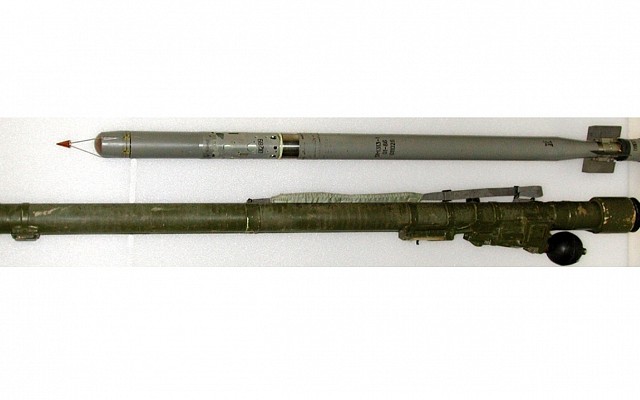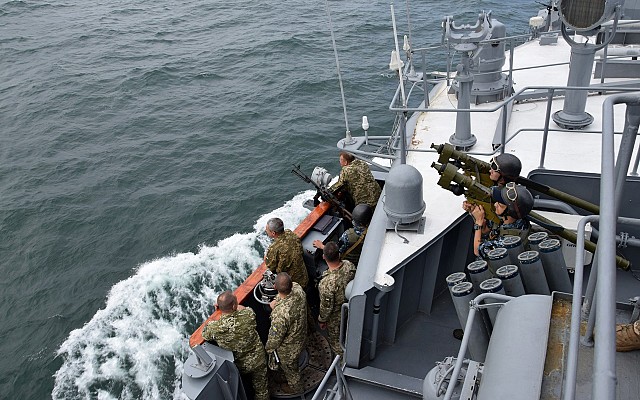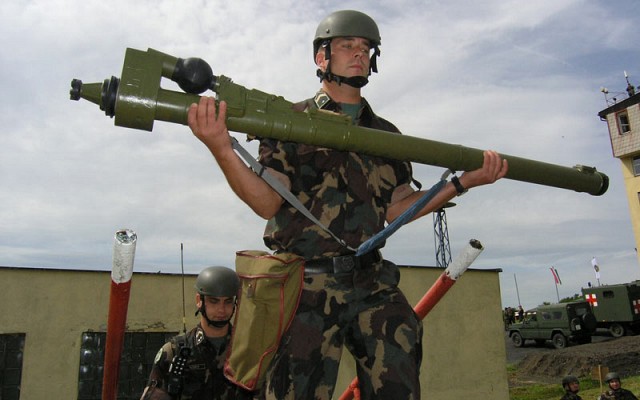9K310 Igla-1
NATO: SA-16 Gimlet
Overview
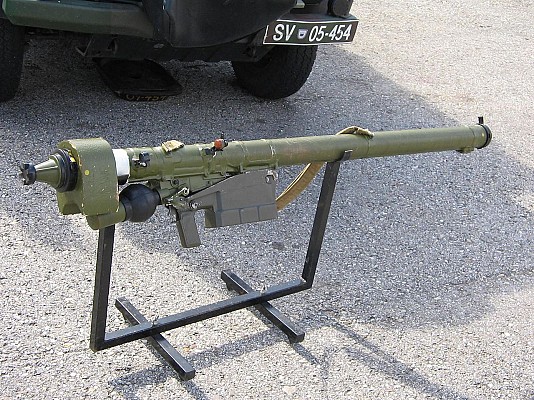
9K310 Igla-1
9K310 Igla-1 man portable SAM system on a display stand.
Source: www.bemil.chosun.com -
© GNU Attribution - Share Alike license
Russia - KBM Kolomna
Bulgaria
Igla-1
Russian for "needle 1"
9K310 (GRAU index for system)
9M313 (GRAU index for missile)
Description
Introduction
The 9K310 Igla-1 is a late Cold War era man portable SAM system of Soviet origin. In the West its is known under the NATO reporting name "SA-16 Gimlet". The Igla-1 is a simplified spin-off from the Igla design project, which eventually resulted in the more capable 9K38 Igla (NATO: SA-18 Grouse). Still, the Igla-1 proved far more capable than the aging 9K32 Strela-2 (NATO: SA-7 Grail).
Design
The Igla-1 has a conventional design. It is an infrared guided missile with second generation passive infrared seeker in the nose. This is followed by the warhead section and the rocket engine. A booster launches the missile from the gripstock launcher and provides initial velocity. The missile has four small wings at the front for steering and larger folding wings near the nozzle for stability. The gripstock launcher consists of a launch tube, sight unit, battery unit and trigger group.
Firepower
The Igla-1 features a second generation infrared seeker that allows for an all aspect engagement of helicopters and aircraft. The 9M313 missile has a range of 5 km and ceiling of 2.5 km. The increased speed of the missile allows it to engage targets travelling just above Mach 1. Compared to the earlier 9K32M Strela-2M (NATO: SA-7 Grail) the seeker is more capable and less easy to deceive with flares.
Mobility
The Igla-1 is a very mobile system as the missile and its gripstock launcher are man portable, even over longer ranges. The system is operated by a single person. A four round launcher is used on ships of various sizes.
Users
The 9K310 Igla-1 was adopted in large quantity by the Soviet Union, and later Russia. Although less capable, it is cheaper than the 9K38 Igla (NATO: SA-18 Grouse). This made that the Igla-1 was exported in large quantities and it is in widespread use today.
System composition
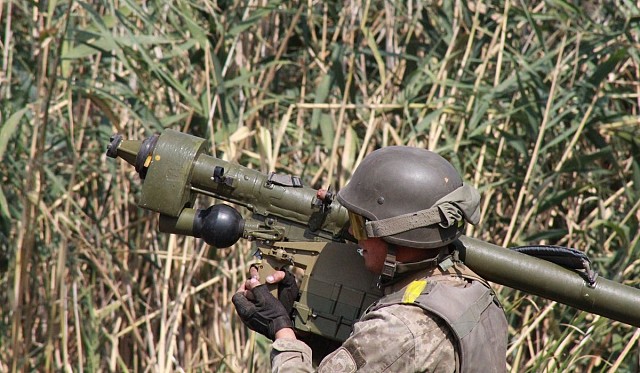
9K310 Igla-1
Ukranian soldier with 9K310 Igla-1 system in 2016.
Source: Ministry of Defense of Ukraine -
© GNU Attribution - Share Alike license
9K310 Igla-1 components
Details
Media
Related articles
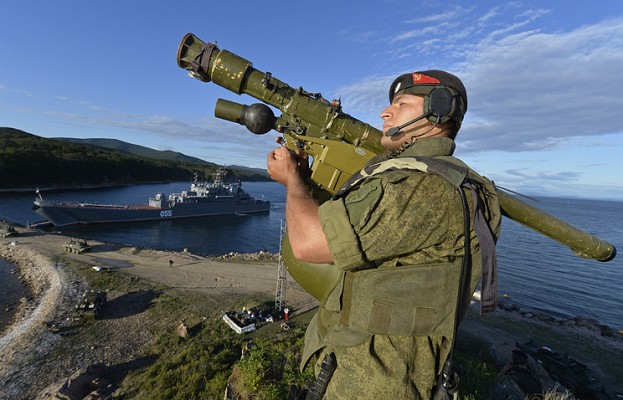
9K38 Igla
The 9K38 Igla was a more ambitious design project carried out alongside the 9K310 Igla-1. It is a more capable system at higher production cost.
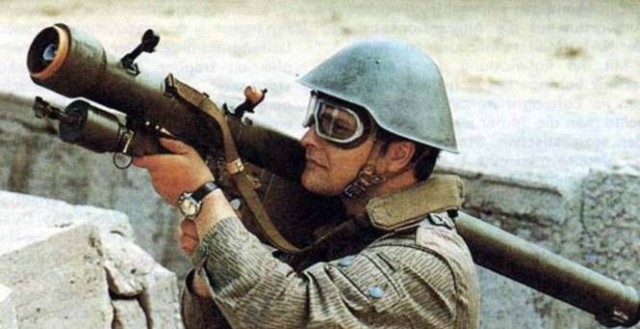
9K32 Strela-2
The 9K310 Igla-1 was developed to replace the large stocks of older 9K32M Strela-2M in Soviet service.
